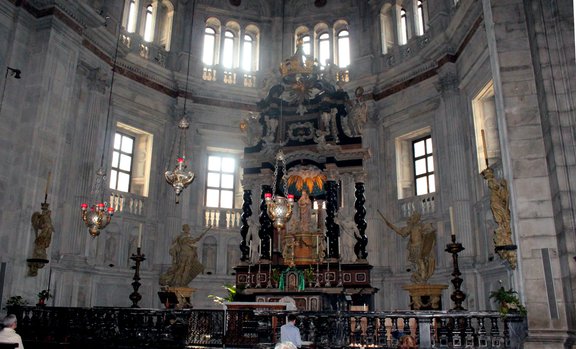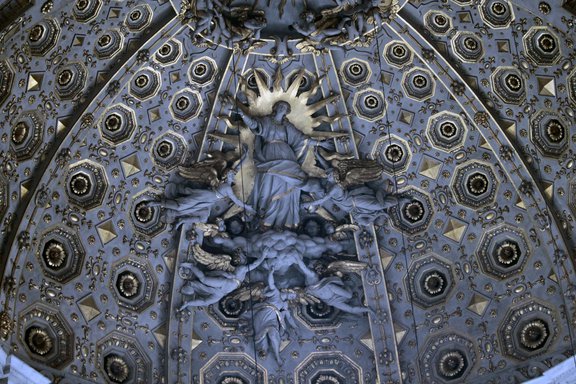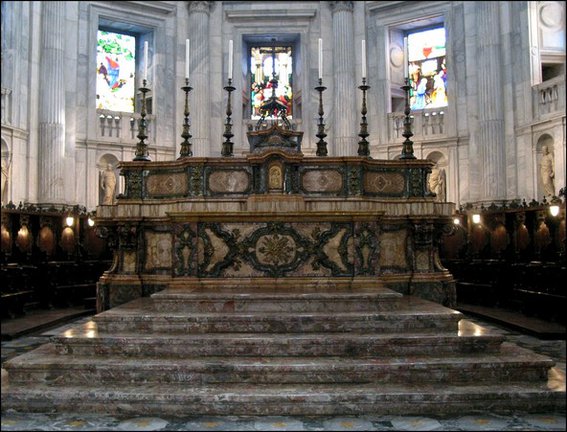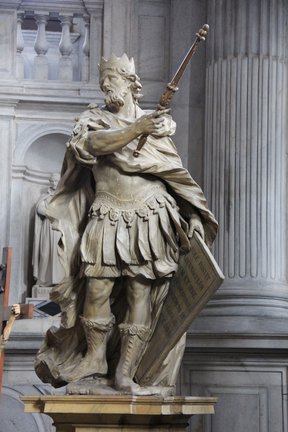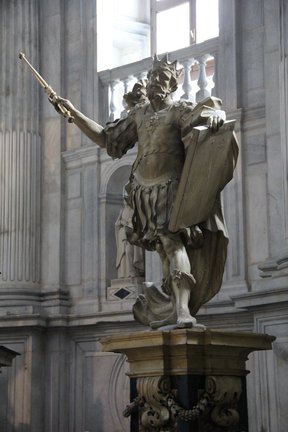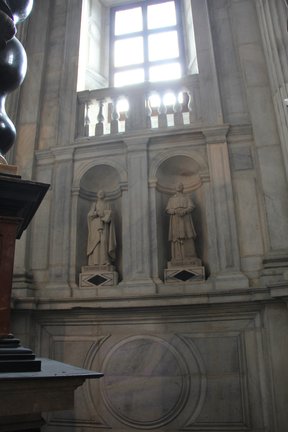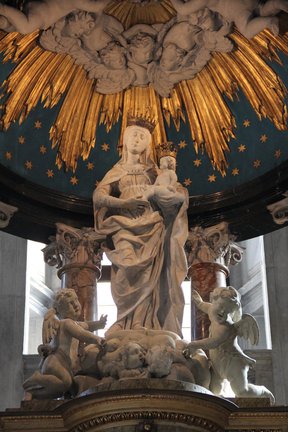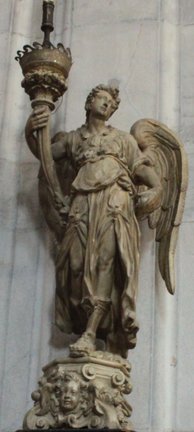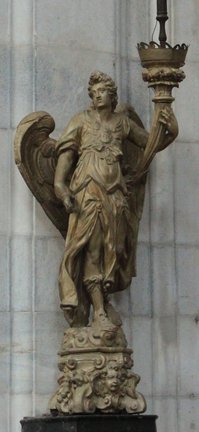Cappella della Madonna
La Cappella nell’abside meridionale è dedicata alla Beata Vergine Assunta
La costruzione della cappella meridionale iniziò nel 1627 su modello rinascimentale dell’abside centrale. Diresse i lavori l’architetto milanese Francesco Maria Richini
L’immagine dell’Assunzione domina dall’alto la calotta absidale nel gruppo plastico dello stuccatore Francesco Silva (1641) .
L’altare barocco progettato dal milanese Gerolamo Quadrio richiese vent’anni di elaborazione (1666-1686). Le colonne tortili (1673-74) si ispirano al baldacchino berniniano di S. Pietro.
I due angeli coi turiboli che si frappongono alle colonne sono un tentativo d’imitare l’ariosa soluzione dell’altare della Vergine e come fuori da quello, nello spazio presbiteriale, campeggiano due grandiose statue di re-Profeti, così anche qui furono allestite due statue esterne dei profeti Elia ed Isaia, però di debole presenza: sarebbero opera di Raimondo Ferrabosco (1636 ca).
Ai lati dell’altare due grandi statue di Davide e Salomone , rispettivamente opera di G. Pietro Lironi e di Andrea Radaelli. Sembrano di marmo, ma sono in legno dipinto
Di primo Ottocento sono le statue di santi nelle nicchie dell’abside (Buzzi Leone di Viggiù).
La statua della Madonna che sta al centro dell’altare è più antica (inizi XVI sec.): è opera di Tommaso Rodari.
I due angeli reggi candelabro sulle spalle dell’arco di accesso provengono probabilmente dall’altare maggiore seicentesco.
Prima della costruzione della cappella in quest’area sorgeva l’altare di Santa Lucia, cui si contrapponeva l’altare di S. Abbondio nella navata settentrionale.
Per la presenza d’acqua di falda, le fondazioni della Cappella della Madonna furono gettate su pali di rovere. Le maestranze furono dirette da un esperto capomastro di Piazza (Cernobbio), Marzio Dotti, maestro di fiducia del principale sostenitore finanziario dell’opera, l’abate Marco Gallio. Altre potenti famiglie comasche procurarono all’estero (“Alemagna”) il rame per la copertura esterna (1639).
Gli stucchi all’interno della cappella videro operosi nel 1640: gli stuccatori Giovanni e Giacomo Aliprandi per lacunari indorati da Simone Alberti e il figurista Francesco Silva autore del gruppo dell’Assunta con gli angeli (1641), pure indorati dall’Alberti con foglie d’oro procurate a Milano.
Nel 1641 il primo pavimento della cappella fu lastricato di “piodoni”, pietra grigia di Moltrasio.
Complessa fu la vicenda dell’altare: scartati i disegni di Francesco Maria Richini, del quale fece il modello ligneo Raimondo Ferabosco, quelli di Angelo Falcone e di Francesco Pozzo, nel 1666 fu Gerolamo Quadrio a fissare il disegno dell’altare, del quale fece il modello ligneo Giuseppe Gaffuri (1673). Decisivo fu il ruolo della famiglia Odescalchi, di cui Carlo era fabbriciere: al Quadrio avrebbe affidato nel 1673 per la cappella di famiglia in S. Giovanni Pedemonte l’altare di S. Isidoro, la cui statua è in Duomo nella vicina campata.
L’esecuzione della struttura marmorea delle colonne tortili dell’altare è dello scalpellino Giulio Tencalla da Bissone. I capitelli furono scolpiti da Ludovico Salvi (1675-78).
Giuseppe Gaffuri e Girolamo Garobbio intagliarono nel legno la nuvola e gli angeli che fanno da piedestallo alla statua della Vergine (1686).
La corona alla sommità è in rame dipinto a imitare il bronzo, è retta da quattro angioletti opera di Giovan Pietro Lironi.
I due angeli di marmo sono di Francesco Pozzo quello a sinistra che regge il sole (1676), l’altro di Marcantonio Petrini che regge la luna. Di scultore non identificato sono i due “angeli reggituribolo in stucco, rivestiti con tela gessata e posizionati tra le colonne tortili”.
I marmi impiegati sono il Carrara, giunto per il porto di Genova, il Musso, la macchiavecchia rossa di Arzo e il mischio di Francia.
Il 15 settembre 1686 fu solennemente collocata nell’altare la statua della Madonna.
A completare geometricamente l'abside troviamo una serie di sculture, partendo da sinistra, che rappresentano nell'ordine San Rocco, San Francesco Saverio, San Pietro Martire, Sant'Andrea Avellino, mentre a patire da destra vediamo San Fermo, Sant'Alosio Gonzaga, San Carlo Borromeo, Sant'Ignazio di Loyola.
Sul lato destro della cappella è la tomba del vescovo Alessandro Maggiolini (1989-2006, † 2008).
Durante i restauri alle pareti della cappella (2011) sono state rinvenute nei camminamenti all’altezza del primo ordine di finestroni quattro epigrafi paleocristiane fra le lastre di tamponamento delle porte in corrispondenza del secondo e terzo balcone da sinistra.
